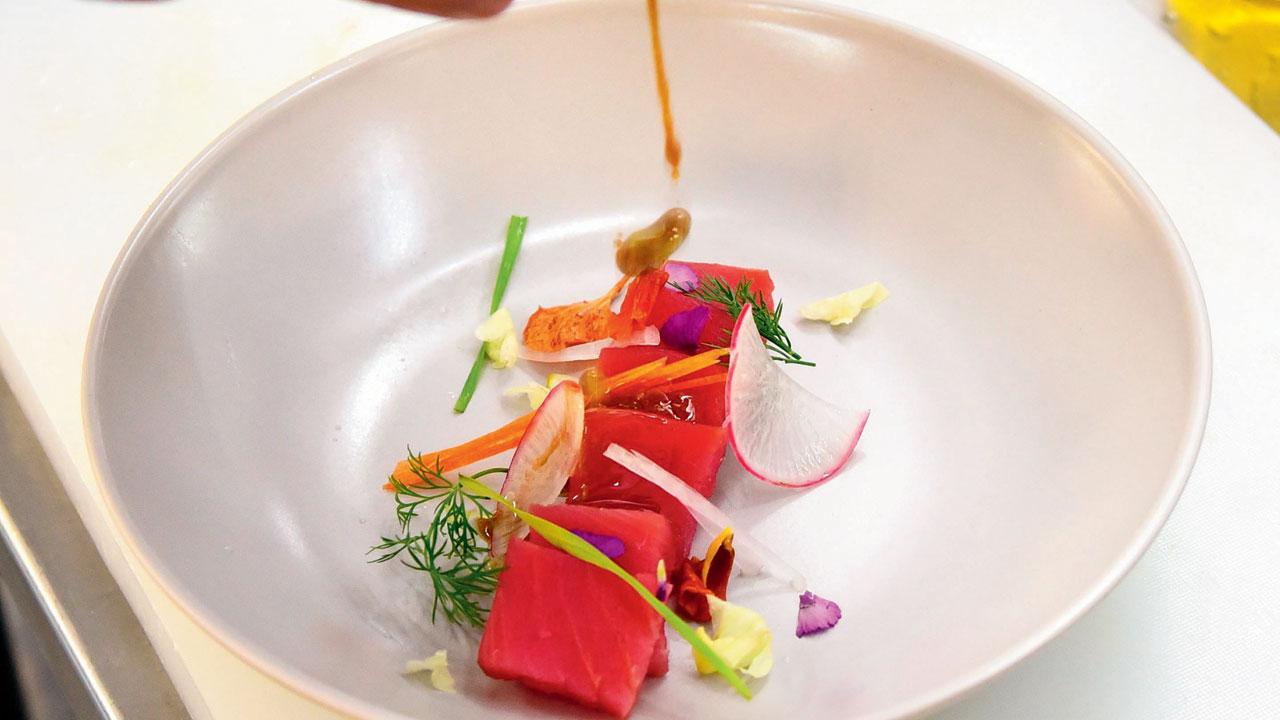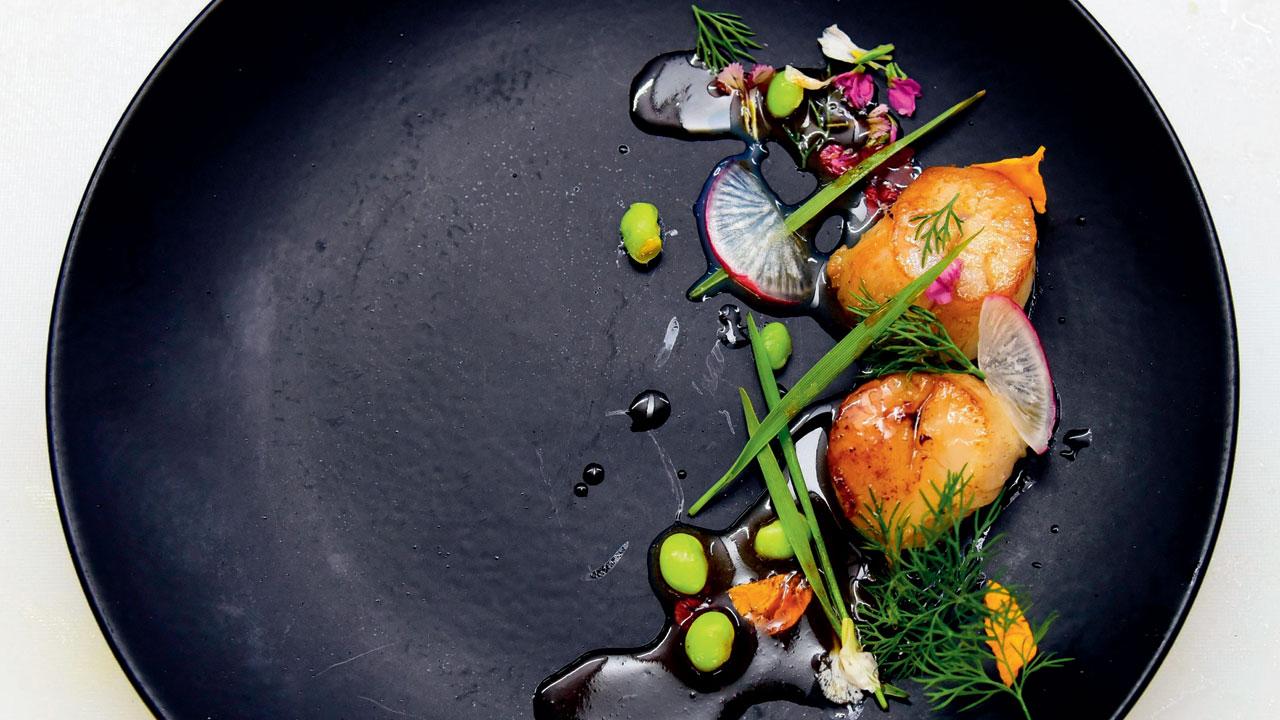Steeped in tradition, the beauty of Japanese cuisine lies in its quality of ingredients, says masterchef Hal Yamashita

Renowned Japanese chef Hal Yamashita was in the city earlier this month, training the student chefs of IHM, Dadar
It’s his first time in the city, and in just three days, he can feel its vivacity pulse through his bones. “You can sense the power in the air, but people here are so kind,” says chef Hal Yamashita in Japanese. His translator conveys Yamashita’s response to us at the Institute of Hotel Management, Dadar, where the latter just conducted a workshop with students. “Maybe it is pleasant for you, but by Japan standards, it’s scorching,” he says of the early March weather here.
ADVERTISEMENT
The first dish he made for us was a seared scallop with sake butter, garnished with herbs. He carefully melts the butter, pours in the sake till it rises in flames, and gently sears the scallop before transferring it to a plate. What he does next is pure sorcery. He nonchalantly picks herbs and edible flowers, and places them gently on the plate, one sprig at a time. The final dish is a painstakingly crafted piece of art—all under three minutes.

A delectable treat is the modern Japanese-style carpaccio with tuna and wasabi sauce. Pic/Shadab Khan
He does the same with the next dish—a modern Japanese-style carpaccio with tuna and wasabi sauce. The precision with which he works on the dish percolates into the flavours, with the wasabi just mild enough to cut through the slim discs of radish and the meat so tender, it melts in your mouth.
Yamashita is the only Japanese Masterchef in the world, with restaurants in Tokyo, Singapore, California, and Dubai. He has won several awards such as Singapore Top Restaurants and Best of Napa County Silver Best Sushi. Yamashita credits his hometown with influencing and developing his sense of taste. Since then, he has travelled and learned in many other countries, with the different cultures and culinary styles nurturing his fusion cooking style. Still, he believes it’s essential to stay true to the original essence.
“The global popularity of Japanese cuisine is a testament to the universality of its delectable taste,” he says. Interestingly, his first date was at an Indian restaurant in his hometown Kobe. “We had samosas, satay, lentil soup, and saffron rice,” he laughs, adding, “I had a lot of Indian friends growing up.” India is a growing country, and the number of people appreciating Japanese food is also rising. Teaching catering college students what actual Japanese food is all about helps them understand the cuisine better. There’s a lot of fusion food around the world, and maybe, in 15 years, there will be a great fusion of Indian and Japanese cuisines, but understanding the original is a must,” he adds.

Seared scallop with sake butter
Drawing similarities between the two cuisines, Yamashita feels most Indians are vegetarians, just like the Japanese. They practise Shojin ryori, the traditional dining style influenced by Buddhist monks that grew in popularity with the spread of Zen Buddhism in the 13th century. The food is made sans meat, fish, or other animal products, and centres around soybean-based foods such as tofu, seasonal vegetables, and wild mountain plants. It balances the body with the change in seasons, just as Indian meals do. “Meats were included in meals through and before the Edo period, which preceded the Meiji Restoration, but only small amounts of beef, pork, and wild game were consumed,” he informs.
Adding to the differences, he noticed that Indians use a lot of solid or powdered spices. In contrast, the Japanese use liquid sauces such as mirin (rice wine) and shoyu (soy sauce); hence, the radically different flavour profiles. Water is an integral part of Japanese cooking. “In Japan, we grow foods close to our home, with a field outside and a mountain in the distance. The soil is always wet because it rains heavily, and the bacteria in the soil help ferment our food. Everything from sake to shoyu to miso is fermented,” he adds.
“There is no fusion in Japanese cuisine,” he says. “We take what we have from fields and what grows around us. Our fusion is pairing foods from other prefectures [47 of them]. In colder regions, there’s more salt; in the centre, there is a milder taste; and in the south, there is sweet-sour food. I wish that everyone savours the authentic food from my country,” he shares.
 Subscribe today by clicking the link and stay updated with the latest news!" Click here!
Subscribe today by clicking the link and stay updated with the latest news!" Click here!











